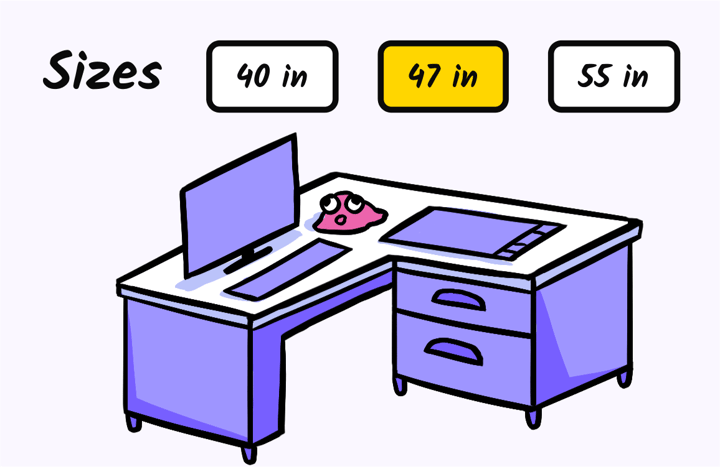Law of Prägnanz: How This Shapes Our Perception
Have you ever looked at a visual puzzle and immediately recognized the hidden image without even thinking about it? Or perhaps you’ve listened to a piece of music and instantly grasped its melodic structure? These experiences can be attributed to the fascinating concept known as the Law of Prägnanz in psychology. In this article, we will delve into the depths of Prägnanz and explore its impact on perception, cognition, and the field of Gestalt psychology.
🔩 The Nuts and Bolts:
- The Law of Prägnanz guides our preference for simplicity in perception. Our brain naturally organizes sensory information into the simplest, most structured patterns, helping us make sense of complex environments.
- Prägnanz plays a central role in Gestalt psychology. Originating from the Gestalt movement, it emphasizes how we perceive the world as organized wholes rather than fragmented parts, providing clarity in perception.
- Prägnanz influences both visual and auditory perception. Whether recognizing patterns in images or melodies in music, our brains filter out irrelevant information to focus on simple, coherent forms.
- Memory and decision-making are shaped by Prägnanz principles. We recall simpler, well-structured information more easily and rely on clarity and order when making decisions, allowing us to process information efficiently.
- Prägnanz helps us mentally complete incomplete patterns. The Law of Closure, a key component of Prägnanz, allows us to fill in gaps in visual stimuli, recognizing familiar objects even when they are partially hidden or incomplete.
- Prägnanz biases us towards familiar interpretations. While helpful for rapid decision-making, it can also lead to perceptual biases, causing us to overlook novel or complex interpretations in favor of what we know.
The Concept of Prägnanz: An Overview
At its core, the Law of Prägnanz, derived from the German word “prägnant” meaning “concise” or “vivid,” refers to the tendency of the human mind to prefer simplicity, order, and clarity in the interpretation of sensory stimuli. It is a guiding principle that governs how we perceive and make sense of the world around us. Let’s dive into the origin and evolution of this fascinating concept.
The Origin and Evolution of the Law of Prägnanz
The Law of Prägnanz finds its roots in the Gestalt psychology movement of the early 20th century. Pioneered by German psychologists Max Wertheimer, Wolfgang Köhler, and Kurt Koffka, Gestalt psychology focused on understanding how individuals perceive and interpret the environment as organized wholes rather than fragmented parts. Within this framework, the Law of Prägnanz emerged as a fundamental principle underlying the formation of perceptual experiences.
As the field of psychology advanced, the concept of Prägnanz expanded beyond the boundaries of Gestalt psychology and made its way into various branches of the discipline. It found applications in perception, cognition, and even therapy, showcasing its influence and versatility. This expansion allowed researchers to explore the intricate workings of the human mind and gain a deeper understanding of how we make sense of the world.
The Basic Principles of Prägnanz
Prägnanz is guided by several basic principles, all working together to shape our perception and cognitive processes. One fundamental principle is the Law of Simplicity—our brain prefers to interpret stimuli in the most straightforward and uncomplicated way possible. This helps us make sense of complex situations quickly and efficiently.
Another principle that plays a significant role in Prägnanz is the Law of Closure. This principle states that we tend to mentally complete unfinished patterns or images by filling in missing information. It is a remarkable phenomenon that allows us to recognize familiar objects or concepts even when presented with incomplete visual stimuli. Our brain’s ability to fill in the gaps is a testament to its remarkable capacity for pattern recognition and interpretation.
In addition to the Law of Closure, the Law of Proximity is another principle that contributes to the formation of Prägnanz. This principle suggests that elements that are close to each other tend to be perceived as a unified group or pattern. By grouping things together based on their relative distance, our visual perception becomes organized and ordered. This principle helps us make sense of complex visual scenes by allowing us to identify relationships and associations between objects.
The Role of Prägnanz in Perception
When it comes to perception, Prägnanz plays a crucial role in shaping our understanding of the world. Let’s explore how this concept manifests in visual and auditory perception.
Prägnanz, a term derived from the German word for “conciseness” or “precision,” refers to the tendency of our perceptual system to organize stimuli into the simplest and most coherent form possible. This principle guides how we make sense of the complex and often ambiguous information our senses provide.
Prägnanz and Visual Perception
Visual perception is heavily influenced by the Law of Prägnanz. Our brain automatically seeks out simplicity, symmetry, and balance in the visual stimuli we encounter. This innate drive towards simplicity explains why we often perceive patterns, shapes, and even faces where none actually exist. Our mind naturally organizes the sensory input into coherent, meaningful patterns, allowing us to make sense of the visual world around us.
Moreover, Prägnanz helps us prioritize information by directing our attention to the most salient aspects of a visual scene. By focusing on the most significant elements, such as a predator lurking in the bushes or a ripe fruit hanging from a tree, our survival instincts are sharpened, enabling us to react swiftly to potential threats or opportunities.
Prägnanz in Auditory Perception
While the Law of Prägnanz is often associated with visual perception, its principles also extend to the realm of auditory perception. Our auditory system seeks out coherent and structured auditory patterns, enabling us to recognize melodies, rhythms, and even speech. Just as in visual perception, our brain naturally filters out irrelevant or noisy information, focusing on the most salient auditory cues that carry meaning and significance.
Through the lens of Prägnanz, music becomes more than just a collection of sounds. It transforms into an intricately organized composition that our brain effortlessly comprehends and appreciates. The harmonies, rhythms, and timbres in music are processed in a way that aligns with the principles of simplicity and coherence, allowing us to derive pleasure and emotional resonance from the auditory stimuli.
Build something your buyers *truly* want
Subscribe to Closing the Gap—a newsletter to help makers and doers get closer to customers. Learn more.
We believe in protecting your data. Here’s our Privacy Policy.
Prägnanz in Cognitive Psychology
Beyond perception, Prägnanz has intriguing implications in the field of cognitive psychology. It influences our memory processes and decision-making abilities, shaping how we store, retrieve, and process information.
Influence of Prägnanz on Memory
Prägnanz aids in memory formation and recall by facilitating the organization of information in our minds. We are more likely to remember concepts that adhere to simple and well-structured patterns. This is why mnemonics, acronyms, and other memory aids that utilize clear and concise patterns are effective in enhancing retention.
For example, imagine trying to remember a long list of random words. Without any organization, it would be challenging to recall all the words accurately. However, if the words were grouped into categories or arranged in a meaningful sequence, such as alphabetical order or by related themes, our memory would be more efficient in retrieving the information. Prägnanz plays a crucial role in this process, helping us create mental structures that facilitate easier storage and retrieval of information.
Moreover, the Law of Prägnanz influences our memory biases. We often prioritize and remember information that aligns with our existing knowledge and beliefs, filtering out details that do not fit neatly into our mental frameworks.
For instance, let’s say you are presented with a series of statements about a particular topic. If most of the statements align with your preconceived notions or beliefs, you are more likely to remember them compared to statements that challenge your existing understanding. This bias can affect how we perceive and recall information, shaping our memory in accordance with our cognitive preferences.
Prägnanz and Decision Making
When it comes to decision making, Prägnanz guides our cognitive processes by simplifying complex situations. It helps us focus on the most relevant information while ignoring distractions or insignificant details. This tendency for streamlined decision making allows us to make efficient choices, even in the face of uncertainty.
Imagine you are faced with a complicated financial decision, such as choosing the best investment option for your savings. Prägnanz would enable you to identify the key factors to consider, such as potential returns, risks, and liquidity, while disregarding less critical aspects that may cloud your judgment, such as short-term market fluctuations or irrelevant opinions. By focusing on the essential elements, Prägnanz helps us make decisions that are more aligned with our goals and values.
However, it is important to note that Prägnanz can also introduce biases by leading us to overlook critical information that may challenge our preconceived notions or preferences. Recognizing and addressing these biases is essential in making well-informed decisions.
For example, if we rely solely on Prägnanz to guide our decision-making process, we may inadvertently ignore important but complex information that could significantly impact the outcome. By being aware of this potential bias, we can actively seek out diverse perspectives, conduct thorough research, and consider multiple factors to make more comprehensive and informed decisions.
Laws of UX
The Law of Prägnanz in Gestalt Psychology
Gestalt psychology and the Law of Prägnanz are intimately intertwined, as both share a common goal—to understand how individuals perceive and make sense of the world. Let’s explore how Prägnanz fits within the broader framework of Gestalt theory and its applications in therapy.
Prägnanz and the Gestalt Theory
Prägnanz serves as a pillar of the Gestalt theory, which emphasizes the importance of holistic perception. According to this theory, our minds naturally organize sensory information into meaningful patterns and wholes rather than perceiving isolated elements. Prägnanz acts as a guiding principle in the formation of these holistic perceptual experiences, allowing us to perceive coherence and order in our surroundings.
One of the most well-known applications of the Gestalt theory and Prägnanz is the famous optical illusion, the Necker cube. This ambiguous figure can be perceived in multiple ways, highlighting the role of the observer’s mental organization guided by Prägnanz.
Prägnanz in Gestalt Therapy
Moving beyond perception, Prägnanz has also found applications in therapy, particularly within the realm of Gestalt therapy. This therapeutic approach emphasizes present-moment awareness and the exploration of one’s immediate thoughts, feelings, and sensations. Prägnanz principles guide therapists in facilitating clients’ self-awareness and understanding by encouraging them to focus on the most vivid and salient aspects of their experience.
In Gestalt therapy, clients are encouraged to explore their inner complexities and uncover the underlying patterns and meanings in their thoughts and emotions. This process aligns with the Law of Prägnanz, as it promotes clarity and conciseness in the therapeutic dialogue.
Criticisms and Limitations of the Law of Prägnanz
As with any psychological concept, the Law of Prägnanz is not without its share of criticisms and limitations. Let’s take a closer look at some of the controversies and boundaries surrounding Prägnanz.
Controversies Surrounding Prägnanz
One of the main criticisms of Prägnanz is its subjectivity. Since individuals’ perceptions are influenced by their unique backgrounds, experiences, and cultural factors, the interpretation of simplicity and order can vary from person to person.
Moreover, there are instances where our brain may prioritize certain stimuli over others due to emotional significance or personal biases. These cases challenge the universality and objectivity of Prägnanz, highlighting the dynamic nature of perception.
The Scope and Limitations of Prägnanz
While Prägnanz greatly contributes to our understanding of perception and cognition, it is important to acknowledge its limitations. Prägnanz principles may not fully account for every aspect of our perceptual experiences, as other factors such as attention, context, and individual differences also play pivotal roles.
Additionally, Prägnanz does not provide a comprehensive explanation for complex cognitive processes or phenomena that involve higher-order thinking. It serves as a valuable framework but should be complemented by other psychological theories to gain a holistic understanding of human perception and cognition.
In conclusion, the Law of Prägnanz offers a captivating lens through which we can unravel the intricacies of perception, cognition, and the human mind. Its principles guide our understanding of how we organize and interpret sensory stimuli, contributing to our overall experience and interaction with the world around us. While it may have its limitations and controversies, Prägnanz remains a powerful concept in psychology, shaping our comprehension of simplicity, order, and the extraordinary capabilities of the human brain.
Law of Prägnanz FAQs
The Law of Prägnanz is a psychological principle that states our minds prefer simplicity, order, and clarity when processing sensory stimuli. This principle guides how we perceive the world, pushing us to organize visual, auditory, and cognitive information into structured, coherent patterns.
Prägnanz influences how we see and interpret images by driving us to recognize simple shapes, symmetry, and balance. Our brain organizes visual stimuli in a way that forms cohesive patterns, even when faced with incomplete or ambiguous information.
Prägnanz is a foundational concept in Gestalt psychology, which focuses on how we perceive the world as organized wholes rather than as isolated parts. It explains how we create meaningful interpretations from sensory input through processes like the Law of Closure and the Law of Proximity.
Yes, Prägnanz simplifies complex decisions by guiding us to focus on the most essential information. By filtering out irrelevant or overly complicated details, it helps us make decisions based on clear and structured data, though it can also introduce biases.
Prägnanz helps us remember information that is simple, clear, and well-structured. Mnemonic devices, acronyms, and other techniques that create simple patterns are effective because they align with Prägnanz principles, making information easier to recall.
The Law of Closure, part of the Law of Prägnanz, refers to our brain’s tendency to mentally complete unfinished images or patterns. When we see incomplete stimuli, our brain fills in the gaps, allowing us to recognize familiar objects or concepts even with missing parts.
While Prägnanz is powerful in shaping perception, it can also lead to biases. We might prioritize familiar or simple interpretations over more complex ones, limiting our ability to see new possibilities. Additionally, individual experiences and context can alter how Prägnanz operates in different situations.



